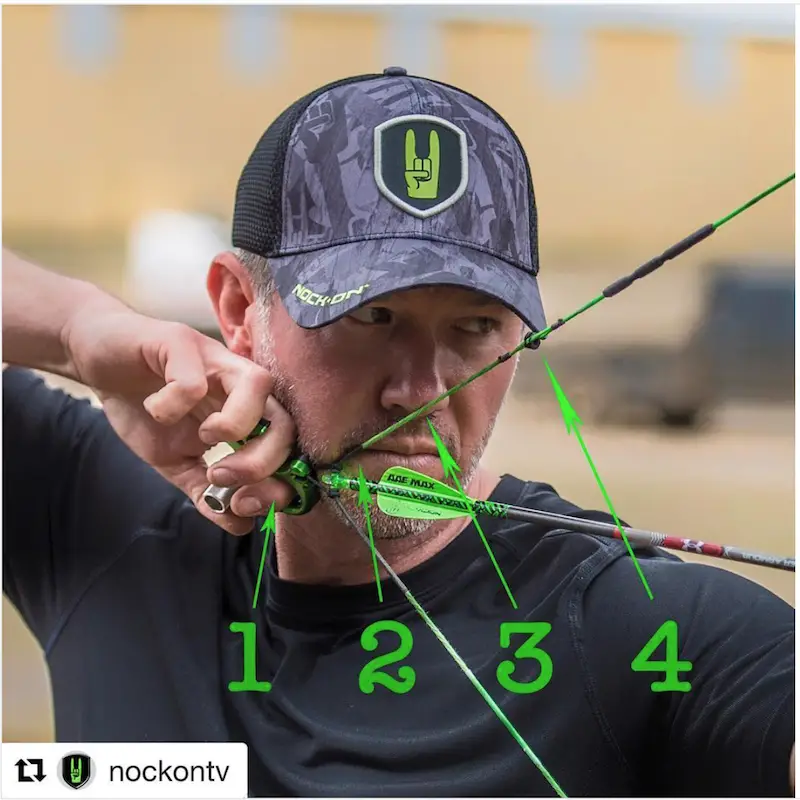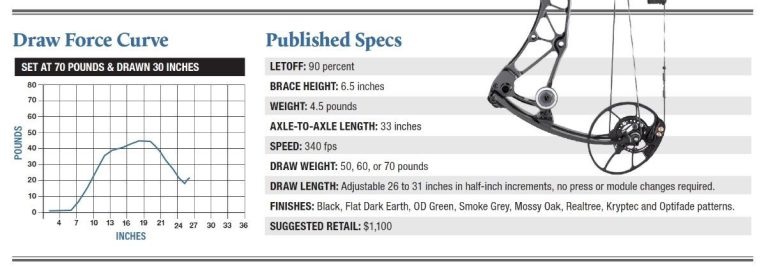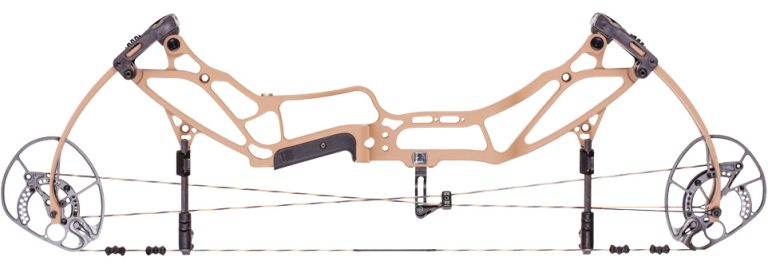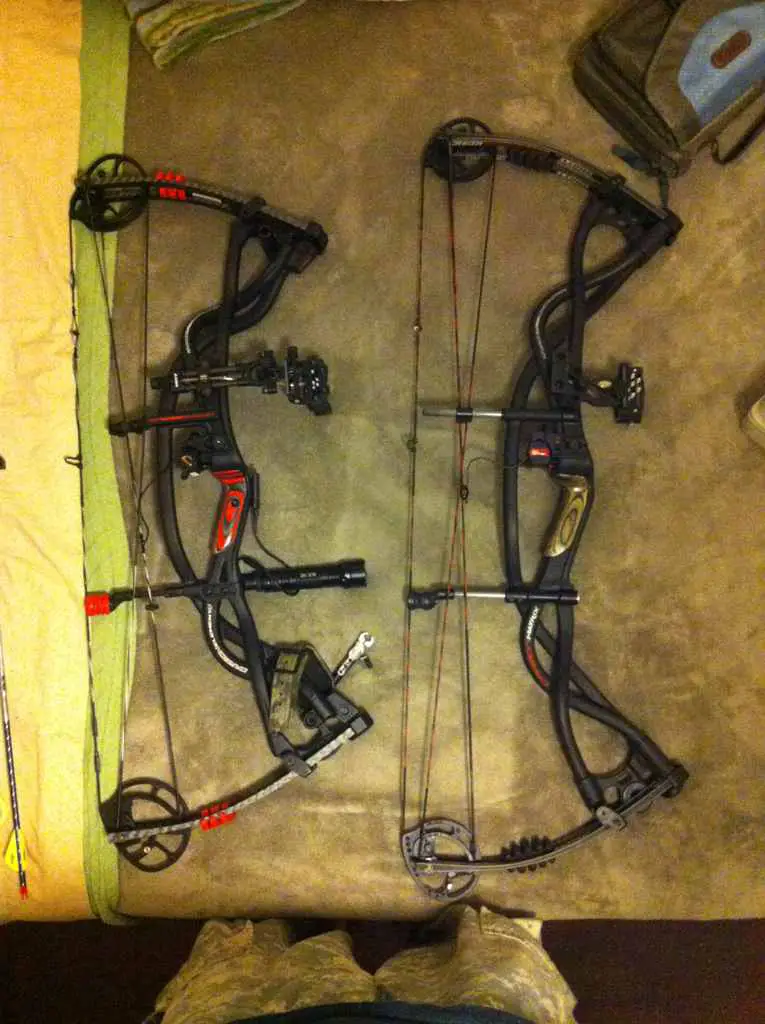Thumb Release Anchor Point
The compound bow is a fascinating fusion of innovation and tradition in the world of archery. With its system of cables, pulleys, and cams, it allows archers to hold a high poundage at full draw and then “let-off” to a lower holding weight, offering better aiming opportunities. This guide provides an overview of compound bows, explaining their key components, advantages, and the factors to consider when choosing the right one. Additionally, it emphasizes the importance of maintenance and safety when using these powerful tools. Whether you’re a seasoned archer or a beginner, the compound bow promises a unique and thrilling experience that honors the past while embracing modern technology.
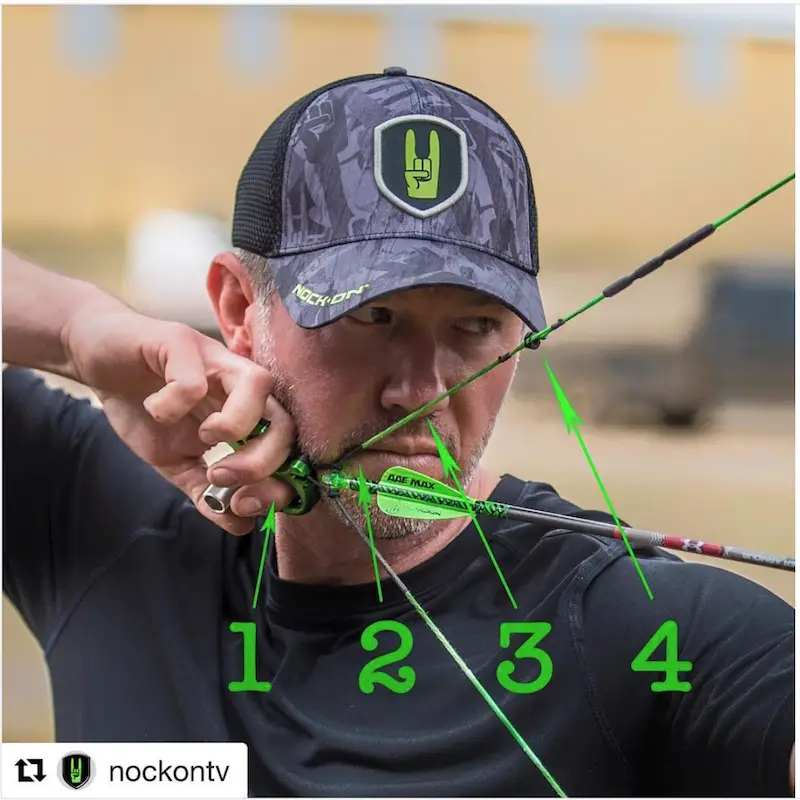
What is a Compound Bow?
A compound bow is characterized by a system of cables, pulleys, and cams that assist the archer in holding a high poundage at full draw. Unlike traditional bows, where the draw weight increases as you pull back, compound bows reach a peak weight and then “let-off” to a lower holding weight, allowing the archer to take more time when aiming.
Key Components:
Limbs
Unlike the straight limbs of a longbow or the curved limbs of a recurve, compound bow limbs are much stiffer, providing the power behind the arrow. The limbs of a compound bow are typically made of composite materials, such as laminated fiberglass or carbon fiber, which give them incredible strength and durability.
Cams
These are the oval-shaped devices that rotate as the bow is drawn. They dictate the draw cycle’s feel and the bow’s overall performance. The design and configuration of the cams determine the speed, let-off, and smoothness of the bow’s draw. There are different types of cams, including single cams, hybrid cams, and binary cams, each offering unique advantages.
Cables & Strings
These are integral to the functioning of the cams, transferring energy to the limbs and arrow during a shot. The cables and strings of a compound bow are typically made of high-strength materials, such as synthetic fibers or special blends. It is important to regularly inspect and maintain the cables and strings to ensure they are in good condition, as any fraying or damage can affect the bow’s performance and safety.
Riser
The central part of the bow, usually made of aluminum or carbon, to which limbs, sights, stabilizers, and other accessories are attached. The riser serves as the foundation of the bow, providing stability and balance. It is often designed with cutouts and cutaways to reduce weight and improve maneuverability. Many modern risers also feature adjustable components for fine-tuning the bow to an individual archer’s preferences.

Advantages of Compound Bows:
Power & Speed
Compound bows can generate immense power, propelling arrows at tremendous speeds. The combination of the cams and the let-off allows the archer to hold the bow at full draw for longer periods, maximizing the stored energy before release. This results in increased arrow velocity and flatter trajectory, making compound bows ideal for long-range shooting or hunting.
Accuracy
The mechanical advantage and the ability to hold the bow at full draw for longer periods allow for better aiming. The let-off provided by the cams reduces the strain on the archer, enabling them to focus on their target and execute a precise shot. Compound bows are known for their consistent and repeatable performance, making them popular among competitive archers who require high levels of accuracy.
Compact Design
The shorter limb design of compound bows makes them more manageable in tight spaces, like hunting blinds or dense forests. This compactness allows for better maneuverability in challenging environments, where traditional bows may be cumbersome or get entangled in foliage. The reduced size also makes it easier to carry and transport the bow, especially during outdoor adventures or hunting trips.
Adjustability
Many compound bows allow for adjustments in draw length and draw weight. This feature is particularly beneficial for beginner archers who are still developing their form and strength. Being able to fine-tune the bow to fit their individual physique and shooting style ensures a more comfortable and enjoyable shooting experience. It also allows archers to adapt the bow as their skills progress or if they need to use the same bow for different purposes, such as target shooting and hunting.
Choosing the Right Compound Bow:
Purpose
Before choosing a compound bow, it is important to determine its intended use. Are you targeting big game, participating in target archery, or maybe bowfishing? Different bows are designed for specific purposes, and understanding your goals will help you narrow down your options and find a bow that suits your needs.
Draw Length
The draw length of a compound bow is the distance from the grip to the bowstring at full draw. It is crucial to ensure the bow fits your personal draw length, as shooting with an incorrect draw length can affect accuracy, comfort, and overall shooting performance. Many bows offer adjustable draw lengths, but it is essential to consult with a knowledgeable archery professional to determine your optimal draw length before making a purchase.
Draw Weight
The draw weight of a compound bow refers to the amount of force required to pull the bowstring to full draw. It is important to start with a weight you can pull back comfortably and consistently. Choosing a draw weight that is too heavy can lead to poor shooting form, fatigue, and even injury. As your strength and skill progress, you can gradually increase the draw weight to challenge yourself and improve your shooting capabilities.
Let-off
Let-off is the percentage of weight reduced when the bow is at full draw. A higher let-off allows you to hold the bow drawn for longer with less effort. This can be advantageous for archers who need more time to aim or require a steadier hold, such as hunters waiting for the perfect shot opportunity. However, it is worth noting that higher let-off can also affect the overall speed and energy transfer of the arrow, so it is essential to find the right balance that suits your shooting style and preferences.
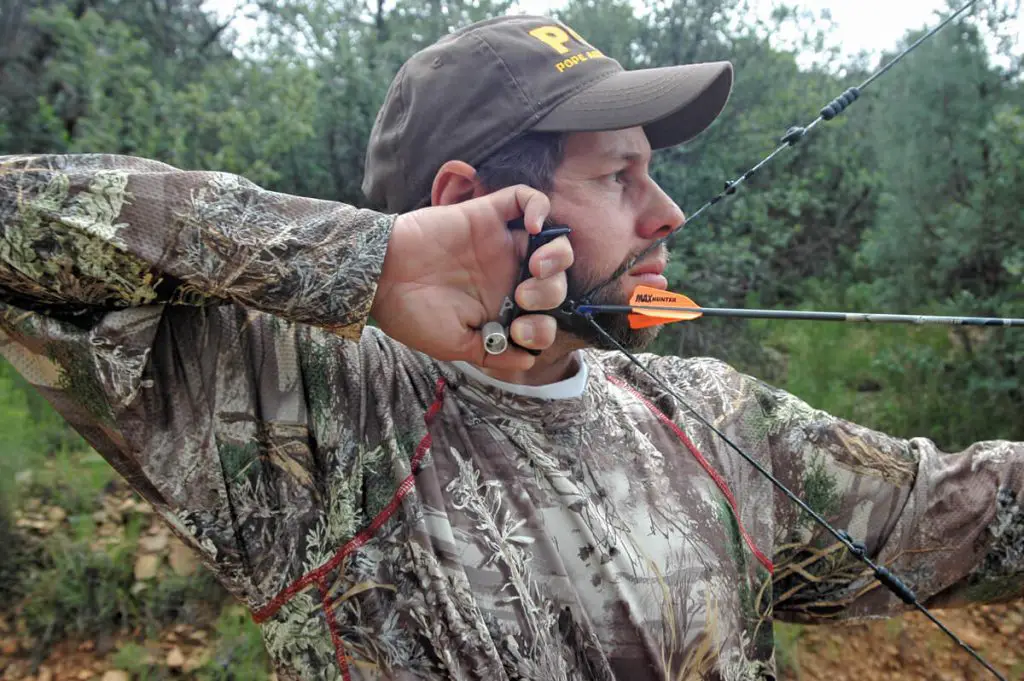
Maintenance & Care:
Compound bows, with their intricate design, require regular maintenance to ensure optimal performance and longevity. Here are some essential maintenance tasks to keep your compound bow in top shape:
- Periodically inspect the strings, cables, and cams for wear and tear. Look for any fraying, separation, or damage that may compromise the bow’s integrity. Replace any damaged components promptly to avoid accidents or performance issues.
- Clean the strings and cables regularly with a mild detergent or a specialized bowstring cleaner. This helps remove dirt, debris, and other contaminants that can cause premature wear or affect the bow’s shooting consistency.
- Apply bowstring wax or conditioner to the strings and cables, following the manufacturer’s instructions. This helps lubricate and protect the fibers, reducing friction and extending their lifespan.
- Check and tighten all screws, bolts, and attachments on the bow. Vibrations from shooting can cause these components to loosen over time, so it is essential to conduct regular checks to ensure everything is secure.
- Consider professional tuning and servicing by a qualified archery technician at least once a year. They can inspect and fine-tune the bow, ensuring it is in optimal condition and performing at its best.
By implementing a regular maintenance routine and staying proactive with care, you can extend the lifespan of your compound bow and maintain its reliability and performance for years to come.
A Word on Safety:
The power of a compound bow should never be underestimated. When using a compound bow, it is crucial to prioritize safety to prevent accidents and injuries. Here are some key safety considerations:
- Always use arrows recommended for your specific bow’s draw weight and length. Using incorrect arrows can lead to equipment failure, damage to the bow, and potential harm to yourself or others.
- Ensure your shooting lane is clear of any obstructions or people before drawing and releasing the bow. Make sure you have a clear line of sight to your target and that no one is within the potential path of the arrow.
- Be aware of what lies beyond your target. Arrows can travel far, and it is important to consider the surroundings to avoid unintended harm to people, pets, or property.
- Never dry-fire your compound bow. Dry-firing refers to releasing the bowstring without an arrow in place. Doing so can cause significant damage to the bow, resulting in costly repairs or rendering it unusable.
- Practice proper form and technique, following the guidelines and instructions from experienced archers or professional instructors. Proper form not only enhances accuracy but also minimizes the risk of strain or injuries to your body.
Prioritizing safety not only protects you and others but also ensures a enjoyable and responsible archery experience.
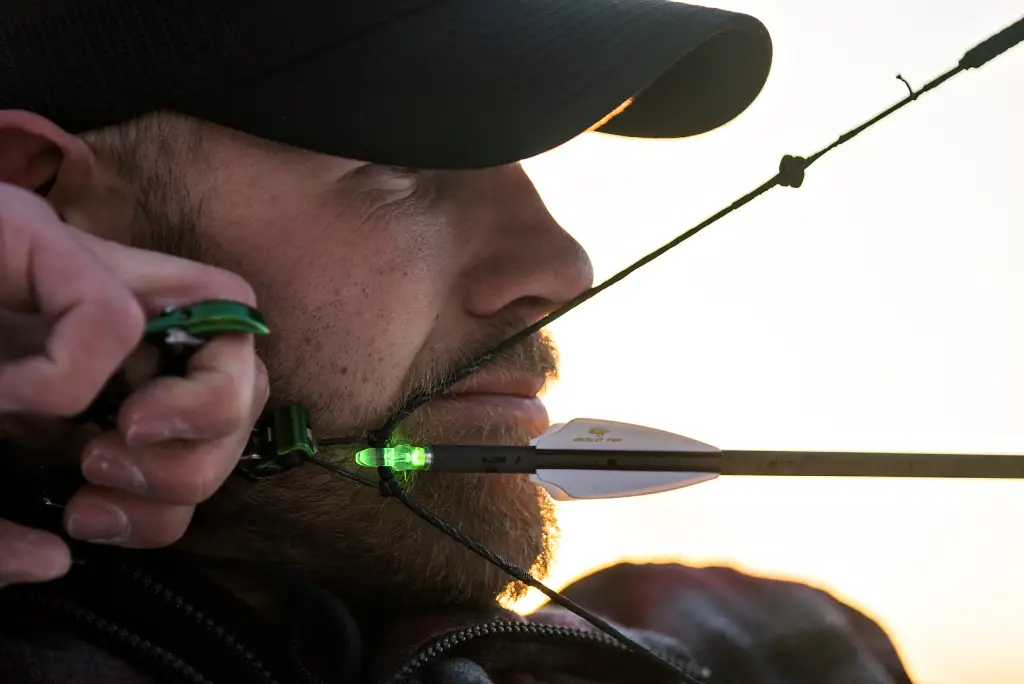
Conclusion:
The compound bow, since its invention in the 1960s, has revolutionized the archery world. It blends the age-old principles of bow and arrow with cutting-edge technology, offering archers a unique and thrilling experience. With their power, speed, accuracy, and adjustability, compound bows have become the preferred choice for many archers, whether they are beginners, avid hunters, or competitive marksmen. By understanding the key components, advantages, and factors to consider when choosing a compound bow, as well as practicing proper maintenance and safety protocols, you can confidently embark on your archery journey and enjoy the art and excitement of shooting with a compound bow.

